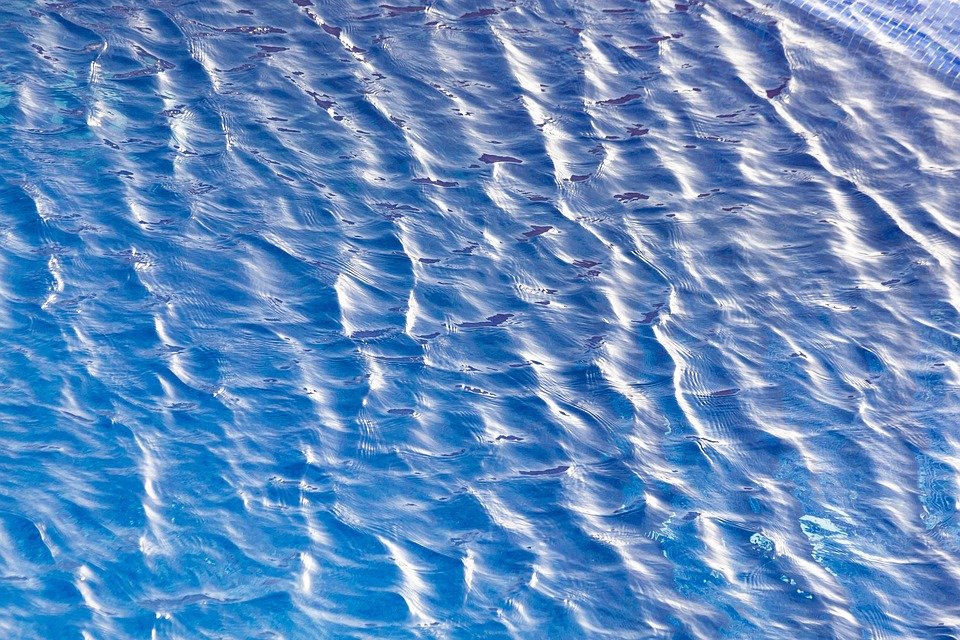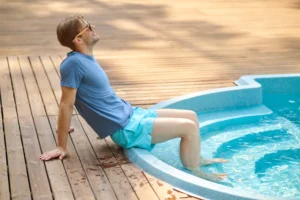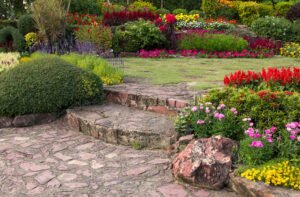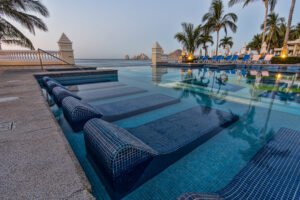How to Remove Algae from Your Pool: A Step-by-Step Guide for Dubai Homeowners
As a resident of Dubai, it’s essential to keep your pool in pristine condition, especially during the hot summer months when algae is more likely to thrive. Algae not only detracts from the beauty of your pool but can also pose health risks. In this comprehensive guide, we’ll walk you through How to Remove Algae from Your Pool: A Step-by-Step Guide, offering valuable insights and expert advice tailored for homeowners and property investors in Dubai and surrounding areas like Emirates Hills, Palm Jumeirah, and Arabian Ranches.
Understanding Algae in Pools
Algae are microscopic plants that can turn your crystal-clear pool into a murky swamp if left untreated. Here are the three main types of algae you might encounter:
- Green Algae: The most common type found in pools. It’s often caused by inadequate sanitation and can be easily treated.
- Mustard Algae: Yellow or brown in color, mustard algae can attach to pool walls and is often resistant to standard pool treatments.
- Black Algae: The most stubborn variety, black algae forms root-like structures into pool surfaces, making it difficult to remove.
Why Does Algae Grow in Your Pool?
Several factors contribute to algae growth in pools:
- Inadequate Chlorine Levels: Chlorine helps keep algae at bay. Low levels make your pool a breeding ground.
- Poor Filtration: If your pool’s filter isn’t functioning correctly, it can lead to stagnant water, promoting algae growth.
- Warm Weather and Sunlight: The sun can heat your pool, speeding up algae growth, especially in a hot climate like Dubai.
- Organic Debris: Leaves, dirt, and insects can introduce algae spores into your pool.
Tools and Supplies You’ll Need
Before diving into the project, gather the following supplies:
- Pool Shock: A chlorine or non-chlorine shock to treat algae.
- Algaecide: A specialized chemical to prevent and kill algae.
- Pool Brush: For scrubbing the walls and floor of your pool.
- Vacuum: Automatic or manual, to clean up after treatments.
- Water Test Kit: To check chemical levels.
- Filter Cleaner: To ensure your filtration system is operating efficiently.
Step-by-Step Guide to Removing Algae from Your Pool
Step 1: Assess the Situation
Before you start, evaluate how severe the algae problem is:
- Check Pool Water Color: Is it green, cloudy, or has black spots?
- Inspect Filtration System: Is it working properly? Clean or replace the filter if necessary.
- Test Water Chemistry: Use a water testing kit to check chlorine levels, pH, and alkalinity.
Step 2: Brush the Pool Walls and Floor
- Use a Pool Brush: Scrub all surfaces where algae may attach, focusing on corners and ladders where algae like to hide.
- Be Thorough: This will help loosen the algae and prepare it for treatment.
Step 3: Shock Your Pool
- Calculate the Right Dose: Depending on the severity of the algae, use your pool shock according to its instructions.
- Distribute Evenly: Pour the shock solution evenly around the perimeter of the pool.
- Wait: Allow the water to circulate for at least 24 hours before proceeding.
Step 4: Add Algaecide
- Follow Product Instructions: Once the shock has settled, add the algaecide according to the instructions on the label.
- Focus on the Problem Areas: Pay extra attention to areas with stubborn algae, particularly if dealing with mustard or black algae.
Step 5: Run the Pool Filter
- Set the Filter to “Filter” Mode: Keep the filter running continuously for at least 24 hours to clear debris and dead algae from the water.
- Backwash If Necessary: If you have a sand filter, backwash it to remove the accumulated debris.
Step 6: Vacuum Your Pool
- Manual Vacuuming: Use a manual vacuum or let an automatic one do the work to pick up any leftover algae from the floor.
- Remove Any Visible Algae: Focus on areas where algae was particularly dense.
Step 7: Test and Balance Water Chemistry
- Test the Water Again: After running the filter, check the chlorine, pH, and alkalinity levels once more.
- Adjust as Needed: Make necessary adjustments to keep your water balanced.
Step 8: Maintain Regular Cleaning and Chemical Balance
- Regular Skimming and Brushing: Remove leaves and debris daily and brush the pool weekly.
- Check Water Chemistry Weekly: Regular testing helps prevent algae growth in the first place.
Preventing Future Algae Growth
Taking preventative measures can save you the hassle of dealing with algae again. Here are some tips for Dubai residents:
- Maintain Chlorine Levels: Keep chlorine levels between 1-3 ppm.
- Use a Pool Cover: Covering your pool when not in use helps reduce debris.
- Regular Filter Maintenance: Clean filters according to manufacturer instructions.
- Consider a Saltwater Pool System: Saltwater pools can help maintain consistent chlorine levels naturally.
- Monitor Temperature: Regularly check the water temperature and adjust circulation accordingly during high heat.
Conclusion
Dealing with pool algae can be a daunting task, but by following this Step-by-Step Guide, you can keep your pool clean and inviting for family and friends. Regular maintenance and prompt action will not only enhance the beauty of your pool but also ensure the safety of all swimmers.
If you need professional assistance in maintaining your pool or if you have any questions regarding algae removal and pool care, don’t hesitate to reach out to us at Dream Floor Landscaping Services. We specialize in pool maintenance and landscaping services across Dubai, including hotspots like Emirates Hills and Palm Jumeirah.
For expert advice and reliable service, please contact us at +971563787002.
Keep your pool sparkling clean and enjoy the serenity it brings amidst the bustling city life!
Maintaining a clean pool is crucial in Dubai’s climate. This guide aiming for SEO optimization ensures you capture essential keywords while providing a valuable and engaging resource for pool owners in the region.






